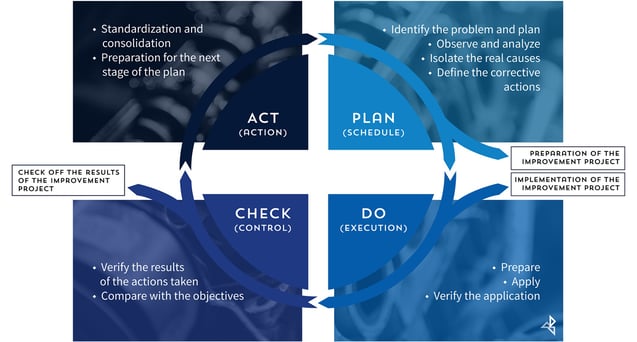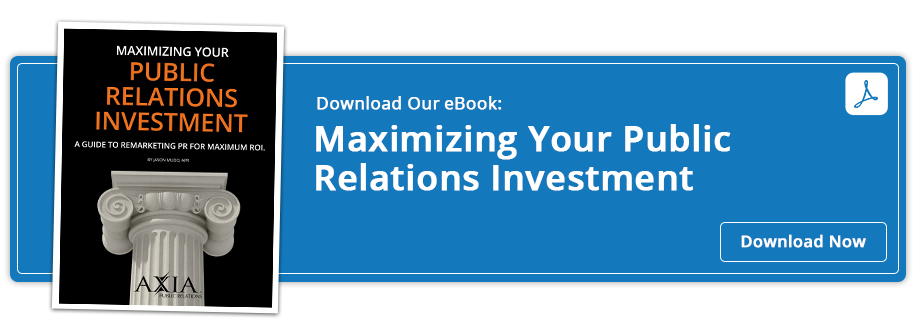Applying the PDCA/Deming Cycle to public relations for strategic growth and improvement
 Using measurement and evaluation (M&E) is a process that takes deliberate planning to thoroughly implement. It’s more than lifting some data from your analytics software and hoping to do better next month. Our previous blog posts discussed the difference between measurement and evaluation, the importance of knowing your purpose in this process, what kind of measurement data to collect and how to create SMART goals.
Using measurement and evaluation (M&E) is a process that takes deliberate planning to thoroughly implement. It’s more than lifting some data from your analytics software and hoping to do better next month. Our previous blog posts discussed the difference between measurement and evaluation, the importance of knowing your purpose in this process, what kind of measurement data to collect and how to create SMART goals.
When we put all of these steps together, what do they look like? W. Edward Deming, a statistician and business consultant who revolutionized thinking around quality management, devised a system: Plan, Do, Check, Act. Today we use the PDCA Cycle – or Deming Cycle – for everything from auto manufacturing to instructional design. We can also apply PDCA to public relations in order to objectively assess the current situation, develop goals, evaluate progress and set new goals.
- Plan
First, define what to measure. What is the business problem or other indicator? This should align with company objectives, KPIs, campaign-specific metrics and other priorities within the company. This is not a solitary process; it’s one where stakeholder input is critical. It’s also not a siloed process – it can’t be a “PR thing” or “one for marketing.” You should include all operational areas that touch the goal in the planning process. This does two things: makes sure you don’t overlook factors because of lack of knowledge in a certain area and helps increase process buy-in through initial engagement and inclusion in the decision-making process.
- Do
This is the implementation stage. Capture the data. Some may be easy to find and already regularly reported; some may require new tools for collection; and some may be more hands-on, requiring interviews, focus groups and combing through social media interactions. If you’ve already established a solid baseline, this is where you test new methods to see how they push to process to realize new results.
What does this look like for the communications industry? Teams may add a new social media platform, try a different method of eliciting or responding to online engagement, approach influencers for product collaboration, sponsor events, perform A/B testing on a website and any number of new strategies that might directly affect the target goal.
- Check
This is the evaluation phase. Analyze the collected data, make correlations and find trends. What does the data actually mean to each stakeholder? What story does it tell? Did the strategies employed create the expected results? Did they do better? Worse? Benefit one area and not another? Share the timely and accessible findings with all stakeholders. There should be no disconnect between the data, the goal and relevance to involved operational areas.
- Act
This is also an evaluation phase. Here, you evaluate the process – not the data. What worked? What could you do differently next time? Assess whether you met the expectations and goals you established in the plan stage. Reflect on the implementation of the plan and use this stage to move on to a new plan. For quality management or process improvement, this could be one in many iterations of the cycle. Otherwise, you should apply the lessons you learn to new projects, campaigns and other PR activities.
The Deming Cycle has many uses and is a simple framework to plan and analyze the process of change management and continuous improvement. While those terms aren’t usually at the top of every PR professional’s mind, with the increasing use of data, they need to be at least hovering in the background and ready for application when the situation calls for systemic and strategic growth and intervention to reach stated goals.

Source: Deming, W.E., 1950.
Elementary Principles of the Statistical Control of Quality, JUSE
If this seems like a lot to bite off all at once, the pros at Axia Public Relations have experience guiding clients through this process from start to finish. We would be pleased to discuss how we can customize the PDCA Cycle to help reach your company’s goals. Download Axia’s complimentary e-book “Maximizing Your Public Relations Investment” for more ways to extend the reach of your PR investment today.
Clients love Noell’s high tech PR and instructional design experience. She earned her Master of Science in information technology management and business analytics from University of North Carolina. Noell has worked with Axia since November 2017.
Featured image credit: 123rf.com
Topics: public relations, investment, measurement, earned media


Comment on This Article